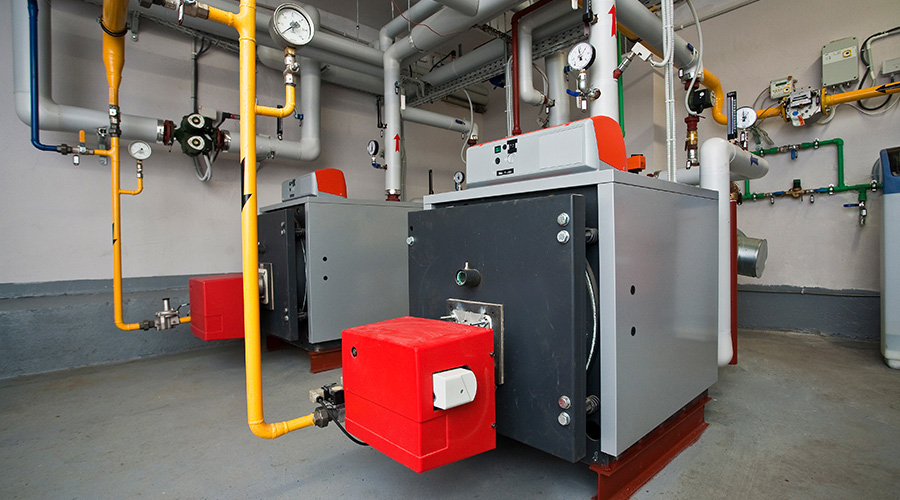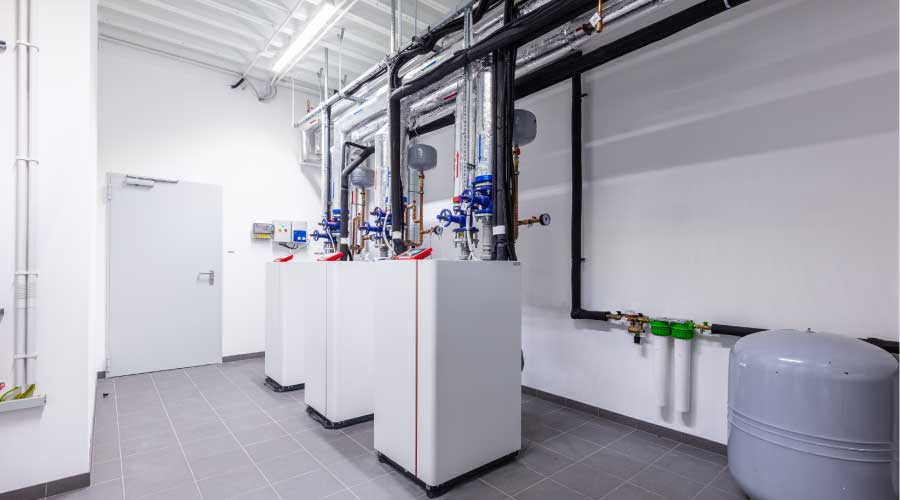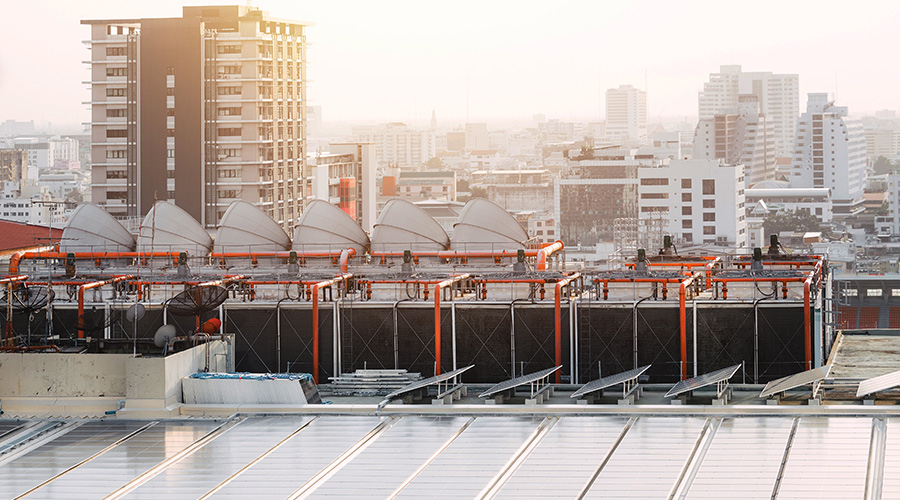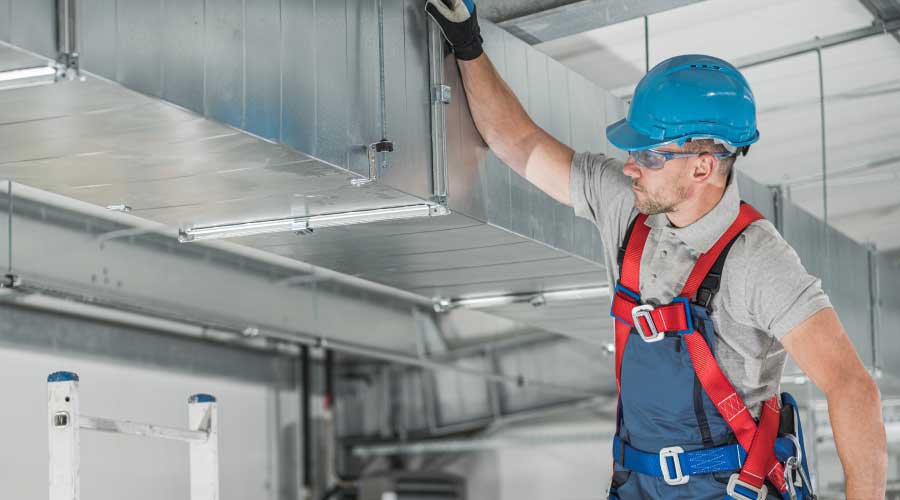Understanding Chilled Beam Systems: Passive and Active
Chilled beams are quiet, with less maintenance and air-side infrastructure, but pumping energy is higher and humidity control is a concern.
To truly evaluate how a four-pipe fan coil system stacks up against its newer counterparts, let’s compare the “chilling effects” of each system. Let’s start with chilled beam systems. A passive chilled beam consists of a fin-and-tube heat exchanger, contained in a housing (or casing), that is suspended from the ceiling. Chilled water passes through the tubes. Warm air from the space rises toward the ceiling, and the air surrounding the chilled beam is cooled, causing it to descend back toward the floor, creating convective air motion to cool the space. This allows a passive chilled beam to provide space cooling without the use of a fan.
An active chilled beam also consists of a fin-and-tube heat exchanger contained in a housing that is suspended from, or recessed in, the ceiling. The primary difference is that an active chilled beam requires a primary air supply. This primary air passes through nozzles, which induce air from the space up through the cooling coil. This induction process allows an active chilled beam to provide much more cooling capacity than a passive chilled beam. The primary air also provides the code-required outdoor ventilation air to the space. For this reason, active chilled beams are more commonly used.
Both passive and active chilled beams are designed to provide sensible cooling only (i.e., no dehumidification), so dehumidification must be provided by a separate dedicated outdoor air unit. For active chilled beam systems, the dedicated outdoor air units will also provide primary air to the chilled beam. Because the chilled beams are designed for sensible cooling only, the chilled water supply temperature to the chilled beams must be raised several degrees above the design space dew point temperature to prevent condensation on the chilled beam.
Chilled beams have a range of advantages:
• Chilled beams have no terminal unit fan, so overall system fan energy is lower when compared to the other systems requiring terminal equipment fans (four-pipe fan coil unit, DOAS, fan-powered VAV).
• Chilled beams have no condensate pan or filter, so the overall system maintenance requirements are reduced compared to systems with terminal equipment filters or condensate pans (four-pipe fan coil units, DOAS, fan powered VAV).
• The system requires minimal air-side infrastructure because central air systems are only required for outdoor air ventilation/primary air. The result is reduced floor space requirement for central air handling equipment and vertical duct risers (shafts).
• Because there is no terminal equipment fan noise, chilled beam systems are quiet.
But there are several drawbacks to chilled beam systems:
• Because the entering chilled water temperature must be several degrees above the space dew point, the water side delta T is generally significantly lower than a fan coil unit or variable volume air handling unit delta T. This results in increased pumping energy for the chilled beam system compared to those systems.
• A dedicated outdoor air unit is relied upon to provide building humidity control during the cooling season. This is critical to the performance of the chilled beam. The dedicated outdoor air unit must continually provide subcooled/low dew point ventilation air to the building spaces to maintain acceptable humidity levels and prevent condensation at the chilled beams. Any condensation will be noticeable by the occupants and could permanently damage adjacent building finishes.
• To prevent condensation at the chilled beams during morning start-up, humidity control during unoccupied building hours (night) is required during the cooling season.
• A single chilled beam cannot serve multiple rooms like a variable air volume terminal, dedicated outside air system terminal or fan coil unit. At least one chilled beam is required for every room.
• Separate heating systems (e.g., finned tube, radiators, electric baseboard, duct heaters) are often required in heating-dominated climates with a chilled beam system. Chilled beams utilize the reduced density of cold air to induce flow, and are therefore less effective at providing heat to a space.
Related Topics:














